
Madeleine L'Engle was an American writer of fiction, non-fiction, poetry, and young adult fiction, including A Wrinkle in Time and its sequels: A Wind in the Door, A Swiftly Tilting Planet, Many Waters, and An Acceptable Time. Her works reflect both her Christian faith and her strong interest in modern science.

Janice Elaine Voss was an American engineer and a NASA astronaut. Voss received her B.S. in engineering science from Purdue University, her M.S. in electrical engineering from MIT, and her PhD in aeronautics and astronautics from MIT. She flew in space five times, jointly holding the record for American women. Voss died in Arizona on February 6, 2012, from breast cancer.

A Wrinkle in Time is a young adult science fantasy novel written by American author Madeleine L'Engle. First published in 1962, the book won the Newbery Medal, the Sequoyah Book Award, the Lewis Carroll Shelf Award, and was runner-up for the Hans Christian Andersen Award. The main characters – Meg Murry, Charles Wallace Murry, and Calvin O'Keefe – embark on a journey through space and time, from galaxy to galaxy, as they endeavor to rescue the Murrys' father and fight back The Black Thing that has intruded into several worlds.

Villette is an 1853 novel written by English author Charlotte Brontë. After an unspecified family disaster, the protagonist Lucy Snowe travels from her native England to the fictional Continental city of Villette to teach at a girls' school, where she is drawn into adventure and romance.

A Ring of Endless Light is a 1980 novel by Madeleine L'Engle. The book tells of teenager Vicky Austin and her struggle to understand life and significance in the universe as she deals with her dying grandfather, while at the same time finding true romantic love. The title originates from a phrase in the seventeenth-century Welsh poet Henry Vaughan's poem "The World."
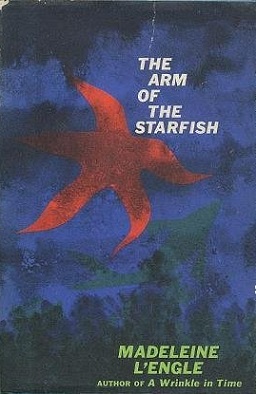
The Arm of the Starfish is a young adult novel by Madeleine L'Engle, first published in 1965. It is the first novel featuring Polly O'Keefe and the O'Keefe family, a generation after the events of A Wrinkle in Time (1962). The plot concerning advanced regeneration research puts this novel in the science fiction genre, but it could also be described as a mystery thriller.
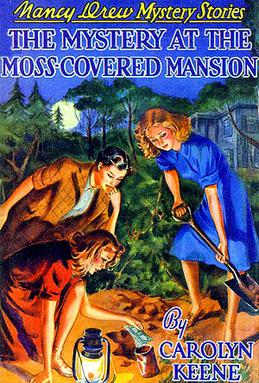
The Mystery at the Moss-Covered Mansion is the eighteenth volume in the Nancy Drew Mystery Stories series published by Grosset & Dunlap, and was first published in 1941. The original text was written by ghostwriter Mildred Wirt Benson, based upon a plot outline from Stratemeyer Syndicate co-owner Harriet Stratemeyer Adams. The book's title was changed to Mystery of the Moss-Covered Mansion when it was revised in 1971, because the story is completely different and not much of the investigation takes place at the title location. In the original, many plots and much investigation all tie back to the same house deep in the forest, while Nancy helps her father locate an heiress, expose an impostor, investigate a murder, and look into strange screams at the mansion; none of the action in the original story took place in River Heights.
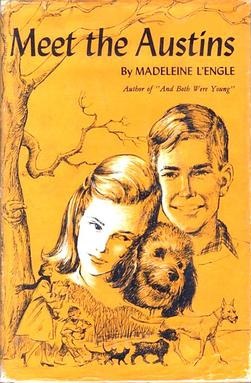
Meet the Austins is the title of a 1960 novel by Madeleine L'Engle, the first of her books about the Austin family. It introduces the characters Vicky Austin and her three siblings, and Maggy Hamilton, an orphan.
Victoria "Vicky" Austin is one of Madeleine L'Engle's frequently used fictional characters, appearing in eight books and referred to in at least one more. She is the protagonist of the Austin family series of books being the first person narrator of Meet the Austins, The Moon by Night, A Ring of Endless Light, Troubling a Star, and the picture book The Twenty-Four Days Before Christmas. A developing poet and writer, Vicky observes the everyday events in her large family, dates several boys, communicates with dolphins, faces the occasional mortal danger, and reflects on important issues about life and death, faith and family as she gradually comes of age.

The Moon by Night (ISBN 0-374-35049-3) is the title of a young adult novel by Madeleine L'Engle. Published in 1963, it is the second novel about Vicky Austin and her family, taking place between the events of Meet the Austins (1960) and The Young Unicorns (1968), and more or less concurrently with the O'Keefe family novel The Arm of the Starfish. The book marks the first appearance of the character Zachary Gray, who dates first Vicky and then Polly O'Keefe. Although Vicky will later appear in three novels that have fantasy and/or science fiction themes, there are no such elements in The Moon By Night.

The Young Unicorns (1968), ISBN 0-374-38778-8) is the title of a young adult suspense novel by American writer Madeleine L'Engle. It is the third novel about the Austin family, taking place between the events of The Moon by Night (1963) and A Ring of Endless Light (1980). Unlike those two novels and Meet the Austins (1960), it does not center on Vicky Austin specifically, but on a family friend, Josiah "Dave" Davidson.
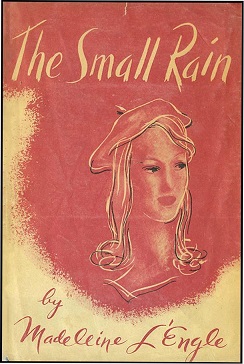
The Small Rain is a semi-autobiographical novel by Madeleine L'Engle, about the many difficulties in the life of talented pianist Katherine Forrester between the ages of 10 and 19. Published in 1945 by the Vanguard Press, it was the first of L'Engle's long list of books, and was reprinted in 1984. L'Engle began work on it in college, and completed it while an actress in New York.
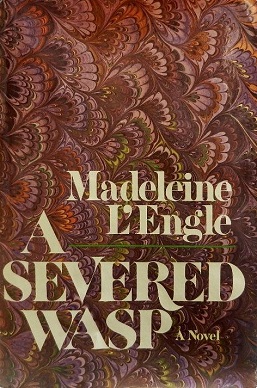
A Severed Wasp (1982) is a novel by Madeleine L'Engle. It continues the story of a pianist, Katherine Forrester, who was first seen in The Small Rain. Now a widow in her seventies, Katherine Forrester Vigneras returns to New York City in retirement from concert touring in Europe. There she encounters Felix Bodeway, an old friend from her Greenwich Village days, who is now the retired Episcopal Bishop of New York. He asks Katherine to give a benefit concert at the Cathedral of St. John the Divine. It turns out to be an unexpected challenge, full of new friends and mysterious dangers.
Madeleine L'Engle, an American novelist, diarist and poet, produced over twenty novels, beginning with The Small Rain (1945), and continuing into the 1990s with A Live Coal in the Sea (1996). Many of her fictional characters appeared in more than one novel, sometimes in more than one series of novels. Other major characters are the protagonists of a single title. This article provides information about L'Engle's most notable characters.

The Time Quintet is a fantasy/science fiction series of five young adult novels written by Madeleine L'Engle.
Madeleine L'Engle has published more than fifty books, including twenty-three novels, virtually all of them interconnected by recurring characters and locales. In particular, L'Engle's three major series have a consistent geography, including a number of significant fictional locations. These generally fall into two categories:

Camilla Dickinson is a 1951 novel by Madeleine L'Engle about the first romance of two teenagers from dysfunctional families in New York City. In 1965, it was republished in slightly different form under the title Camilla.
Erna Low was an Austrian Jewish businesswoman who settled in England and is best known for her work in the ski travel industry.
Maximiliana Sebastiane (Max) Horne is a major character in Madeleine L'Engle's novel A House Like a Lotus. A friend of Sandy Murry, she befriends and mentors Polly O'Keefe.
Madeleine Blair (pseudonym) was a prostitute who lived and worked in the late nineteenth and early twentieth century in the Midwestern and Western United States as well as Canada. Her autobiography, which tells the story of her life and work as a prostitute, was published by Harper & Brothers Publishers in 1919.














